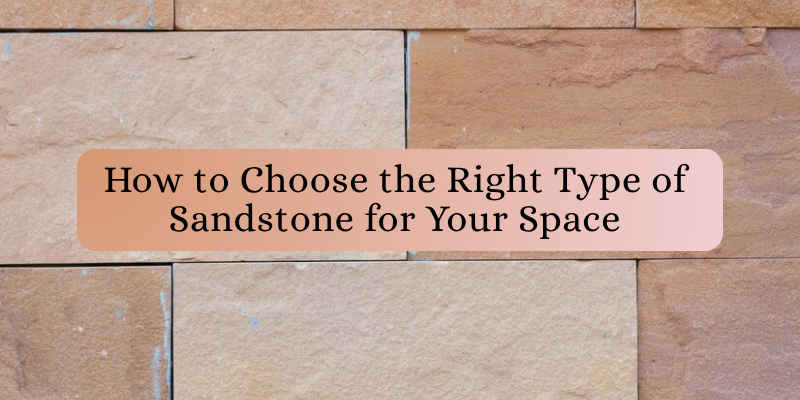Natural sandstone brings elegance and character to any space indoors or out. Whether you’re designing a patio, renovating your living room, or building a commercial property, sandstone offers a blend of natural charm, durability, and versatility. But to get the most from your investment, it’s important to pick the right type. Here’s everything you need to know to make the perfect choice.
1. Identify Where You’ll Use the Sandstone
The intended use plays a major role in selecting the right stone:
- Flooring: Needs a hard, slip-resistant surface go with natural split or brushed finish.
- Wall Cladding: Appearance matters more than texture opt for honed or polished sandstone.
- Outdoor Landscaping: Choose frost-resistant and rough-textured varieties like Kandla Grey or Mandana Red.
- Countertops or Furniture: Go for dense, polished sandstone slabs that are easy to maintain.
2. Explore Color & Aesthetic Choices
Sandstone is known for its warm and earthy tones. Think beyond beige!
| Color | Ideal For |
| Yellow Mint Sandstone | Courtyards, terraces, rustic decor |
| Teakwood sandstone | Wall panels, luxury interiors |
| Maple Red Sandstone | Traditional designs, temples |
| Dholpur Beige | Modern facades, light interiors |
| Rainbow Sandstone | Accent walls, garden pathways |
Tip: Always view stone samples in natural light before making your final decision.
3. Choose the Right Finish for Look & Safety
Each finish changes the surface feel and appearance:
- Natural Split: Rough, traditional, ideal for outdoor paving
- Honed: Smooth, matte, suitable for indoor flooring
- Polished: Glossy, refined, used for feature walls or indoor décor
- Brushed or Tumbled: Soft, antique look—great for classic interiors
4. Thickness & Size Matter Too
For strength and ease of installation:
- 15–25 mm thick: Ideal for interior use
- 25–40 mm thick: Suitable for outdoor use
- 60+ mm: Heavy-duty, high-traffic or driveway use
Custom sizes also affect visual layout and pattern (e.g., random slab vs. cobble vs. tiles).
5. Maintenance & Sealing
Although durable, sandstone is still a porous material. Keep these care tips in mind:
- Sealant: Apply a good-quality stone sealant every 1–2 years to protect from stains.
- Cleaning: Use mild pH-neutral cleaners. Avoid acidic or harsh chemicals.
- Regular Care: Sweep or mop regularly to avoid dust build-up.
6. Buy From a Trusted Supplier
Always choose a reputed sandstone exporter or supplier with:
- Transparent pricing
- Consistent quality
- Customization options
- Logistics and shipping support (if exporting)
Ask for samples, installation advice, and reviews from past clients.
7. Bonus: Styling Ideas with Sandstone
Get creative with your design using sandstone in:
- Garden paths with mixed-color pavers
- Accent feature walls in living or dining areas
- Pool surrounds with anti-slip finishes
- Steps, columns, or arches for traditional charm
- Tabletops or stone benches for outdoor seating
Conclusion
Sandstone is more than just a building material—it’s a design choice that can elevate your space with natural beauty. The key is choosing the right type, finish, and color to match your purpose and style. With the right care and sourcing, sandstone can last a lifetime and leave a lasting impression.


